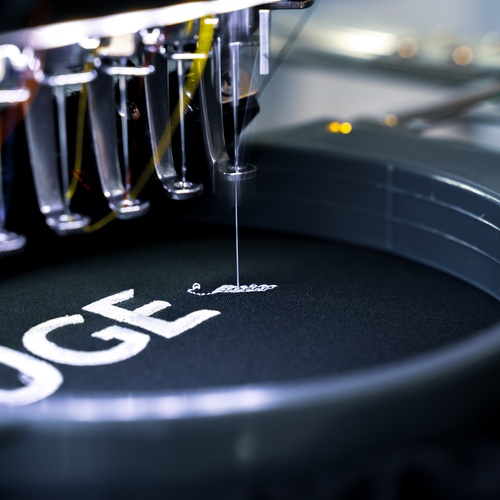Working with stretchy fabrics while embroidering can be tricky. You need the right tools and techniques to stitch beautiful designs without puckering or distortion. Understanding the best needles for embroidering stretchy fabrics is the key to producing flawless results and keeping your frustration levels in check. Whether you’re adding flair to a cozy sweatshirt or customizing yoga pants, this blog will guide you through the best needle options and embroidery tips to tackle stretchy fabrics with confidence.
Why Your Needle Choice Matters
Stretchy fabrics, such as like jersey, spandex, and knitwear, have unique properties that make them tricky to embroider. Without the proper needle, you risk skipped stitches, fabric tears, or tangled thread. Even seasoned stitchers can make mistakes, such as forgetting to stabilize the fabric or assuming a universal needle will do the job. Spoiler alert: It won’t!
The right needle, however, ensures smooth stitching, precision, and great results.
Types of Needles for Stretchy Fabrics
When choosing a needle for your project, think about your materials. Understanding the characteristics of the needle and fabric can enhance your sewing experience. Here are the top needle contenders for embroidering stretchy materials:
1. Ballpoint Needles
Ballpoint needles are the MVP for stretchy fabrics. The slightly rounded tip slides between fabric fibers rather than pierces them, preventing runs or damage. They are ideal for lightweight knits, T-shirts, and jerseys.
2. Stretch Needles
Stretch needles take ballpoint styling to the next level. Designed specifically for high-stretch or elastic fabrics, they minimize skipped stitches by working in tandem with the stretchy materials’ rebound. They are great for spandex, Lycra, and thin jersey fabrics.
3. Embroidery Needles
Yep, embroidery needles make the list, too! They have large eyes and coated shafts to prevent thread breakage, which can be a lifesaver for intricate designs. Combining them with a good stabilizer can work wonders, even on stretchy fabrics. They are perfect for blends of woven and stretchy materials.
Tips for Success on Stretchy Fabrics
Picking the best needle is just the first step. To ace embroidery on stretchy fabrics, consider these tips.
- Use a high-quality stabilizer on the back of your fabric to prevent stretching during embroidery. Tear-away or cut-away stabilizers work best depending on the fabric and design.
- Always test your needle and stabilizer combo on a scrap piece of the same fabric.
- Dense embroidery designs can strain stretchy fabrics, so choose lightweight, open designs for the best results.
- Slowing down the sewing speed can yield much better results when working with tricky materials.
If you’re into quilting, there are quite a few things to know about precut quilting fabrics. They’re perfect for crafting quick, coordinated projects!
Putting It All Together
Mastering embroidery on stretchy fabrics is less about trial and error and more about preparation. Equip yourself with the best needles for embroidering stretchy fabrics and plenty of patience. Avoiding common mistakes when embroidering on stretchy fabrics, such as rushing yourself, will yield great results, whether you’re creating gifts for friends or workout gear for yourself.

